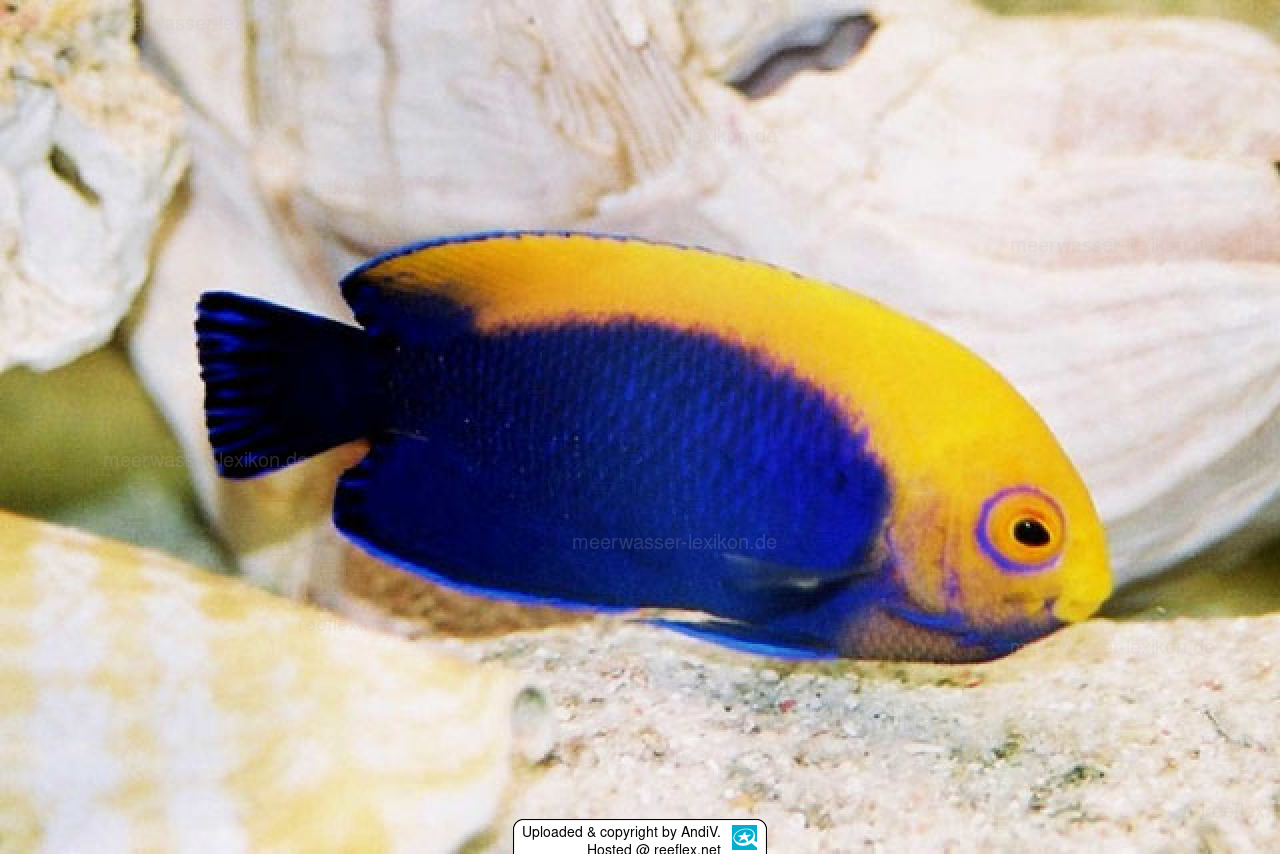Info
Burgess, 1974
Flameback Angelfish, also known as the Flameback Pygmy Angelfish, Fireball Angelfish and Brazilian Flameback Angelfish and is very often confused with the African Flameback Angelfish (Centropyge acanthops).
Flameback Angelfish originates in the Caribbean and can be distinguished from its African counterpart by its dark blue caudal fin (tail). The body is a brilliant to dark blue with a dorsal swatch of yellow-orange extending from the nose to the end including the dorsal fin. The eyes are large and circumscribed in blue.
The Flameback Angelfish can damage reef systems since it is prone to nip at stony and soft corals (sessile invertebrates) and clam mantles. It requires a larger tank with multiple hiding places and plenty of live rock for grazing.
The diet should include marine algae, angelfish preparations, mysid or frozen shrimp, and other high-quality meaty foods.
Synonyms:
Centropyge aurantanota Burgess, 1974
Centropyge aurantonota Burgess, 1974
Classification: Biota > Animalia (Kingdom) > Chordata (Phylum) > Vertebrata (Subphylum) > Gnathostomata (Superclass) > Pisces (Superclass) > Actinopteri (Class) > Perciformes (Order) > Percoidei (Suborder) > Pomacanthidae (Family) > Centropyge (Genus) > Centropyge aurantonotus (Species)
Flameback Angelfish, also known as the Flameback Pygmy Angelfish, Fireball Angelfish and Brazilian Flameback Angelfish and is very often confused with the African Flameback Angelfish (Centropyge acanthops).
Flameback Angelfish originates in the Caribbean and can be distinguished from its African counterpart by its dark blue caudal fin (tail). The body is a brilliant to dark blue with a dorsal swatch of yellow-orange extending from the nose to the end including the dorsal fin. The eyes are large and circumscribed in blue.
The Flameback Angelfish can damage reef systems since it is prone to nip at stony and soft corals (sessile invertebrates) and clam mantles. It requires a larger tank with multiple hiding places and plenty of live rock for grazing.
The diet should include marine algae, angelfish preparations, mysid or frozen shrimp, and other high-quality meaty foods.
Synonyms:
Centropyge aurantanota Burgess, 1974
Centropyge aurantonota Burgess, 1974
Classification: Biota > Animalia (Kingdom) > Chordata (Phylum) > Vertebrata (Subphylum) > Gnathostomata (Superclass) > Pisces (Superclass) > Actinopteri (Class) > Perciformes (Order) > Percoidei (Suborder) > Pomacanthidae (Family) > Centropyge (Genus) > Centropyge aurantonotus (Species)







 AndiV
AndiV















































